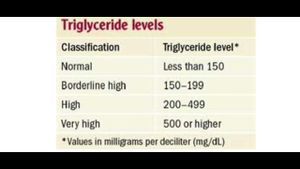A relatable link exists between dietary habits and the likelihood of developing metabolic dysfunction-associated fatty liver disease (MAFLD) among overweight and obese children and adolescents, illustrating the pivotal role of lifestyle choices.
Recent research led by Shahid Beheshti University of Medical Sciences focuses on how lifestyle and dietary indices, particularly those related to hyperinsulinemia, influence the chances of developing MAFLD. With the alarming rise of obesity affecting 1 in 5 children and adolescents, establishing connections between lifestyle factors and liver health is becoming increasingly urgent.
This cross-sectional analysis, which encompassed 334 participants aged 6 to 13 years, revealed substantial insights. Notably, researchers calculated odds ratios using logistic regression to connect dietary and lifestyle behaviors with the risk of MAFLD. Their results showed significant odds of developing MAFLD were directly correlated with higher scores on the empirical lifestyle index for hyperinsulinemia (ELIH) but not the empirical dietary index for hyperinsulinemia (EDIH).
Children diagnosed with MAFLD exhibited remarkably higher body mass index (BMI) values, waist circumference, and levels of fasting serum insulin, corroborated by ultrasound assessment. Specifically, the study concluded, "Participants with MAFLD status, compared to those without MAFLD, had significantly higher values of weight, height, BMI, BMI for age z-score, and waist circumference." This emphasis on the metabolic dysfunctions tied to obesity reveals the pressing need for attention and intervention.
Crucially, the study highlights gender and pubertal differences. The heightened risk of MAFLD was significantly notable among boys and those who had reached puberty, pointing to distinct biological and lifestyle dynamics at play.
The findings are significant, indicating how each child's diet and lifestyle could alter their health trajectories. This points to the need for dietary interventions promoting lower insulinemic potential to mitigate the odds of developing MAFLD.
Using the structured empirical indices for assessing dietary intakes and lifestyle habits, the researchers managed to quantify aspects of children's dietary intakes—measures previously unaccounted for. The study underlines the urgency for lifestyle changes targeting dietary behavior to counteract obesity-related health risks, noting, "Overweight and obese children and adolescents who follow a diet and lifestyle with higher insulinemic potential had an increased likelihood of developing MAFLD."
Consequently, these insights suggest the need for comprehensive obesity management programs to encompass dietary counseling focused on lower insulinemic diets and increased physical activity standards.
While the study's results support the connection between hyperinsulinemia-related dietary patterns and MAFLD risks, the necessity for longitudinal studies to establish causal relationships remains evident. With MAFLD becoming increasingly recognized within pediatric care frameworks, this research advocates early intervention strategies to reduce long-term complications associated with liver diseases.
Integrative approaches involving families, healthcare professionals, and educational resources can facilitate substantial lifestyle changes and enhancements to children's overall health. For the sake of future generations, addressing childhood obesity and its associated risks like MAFLD might rest heavily on the dietary and lifestyle choices made today.



